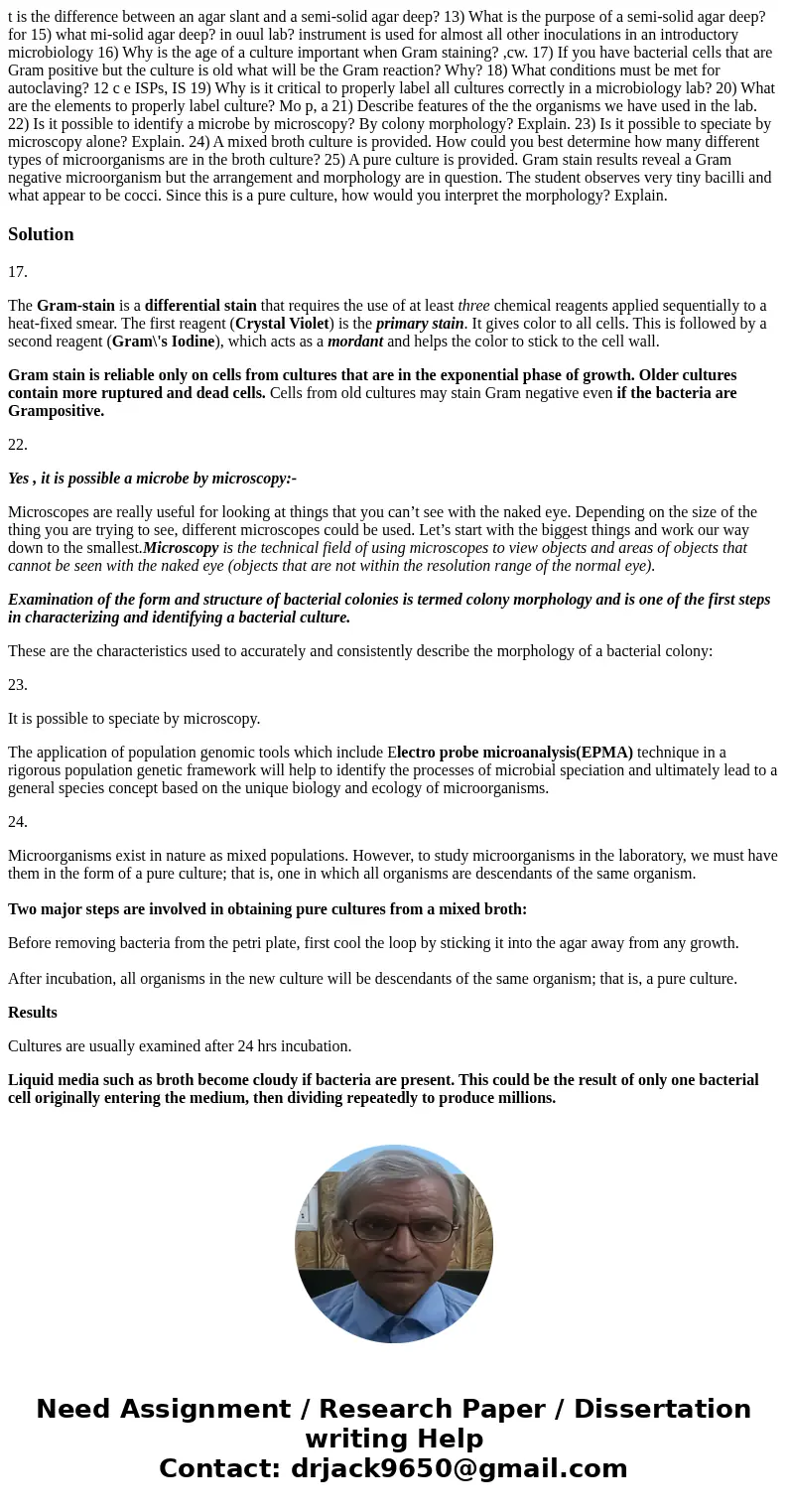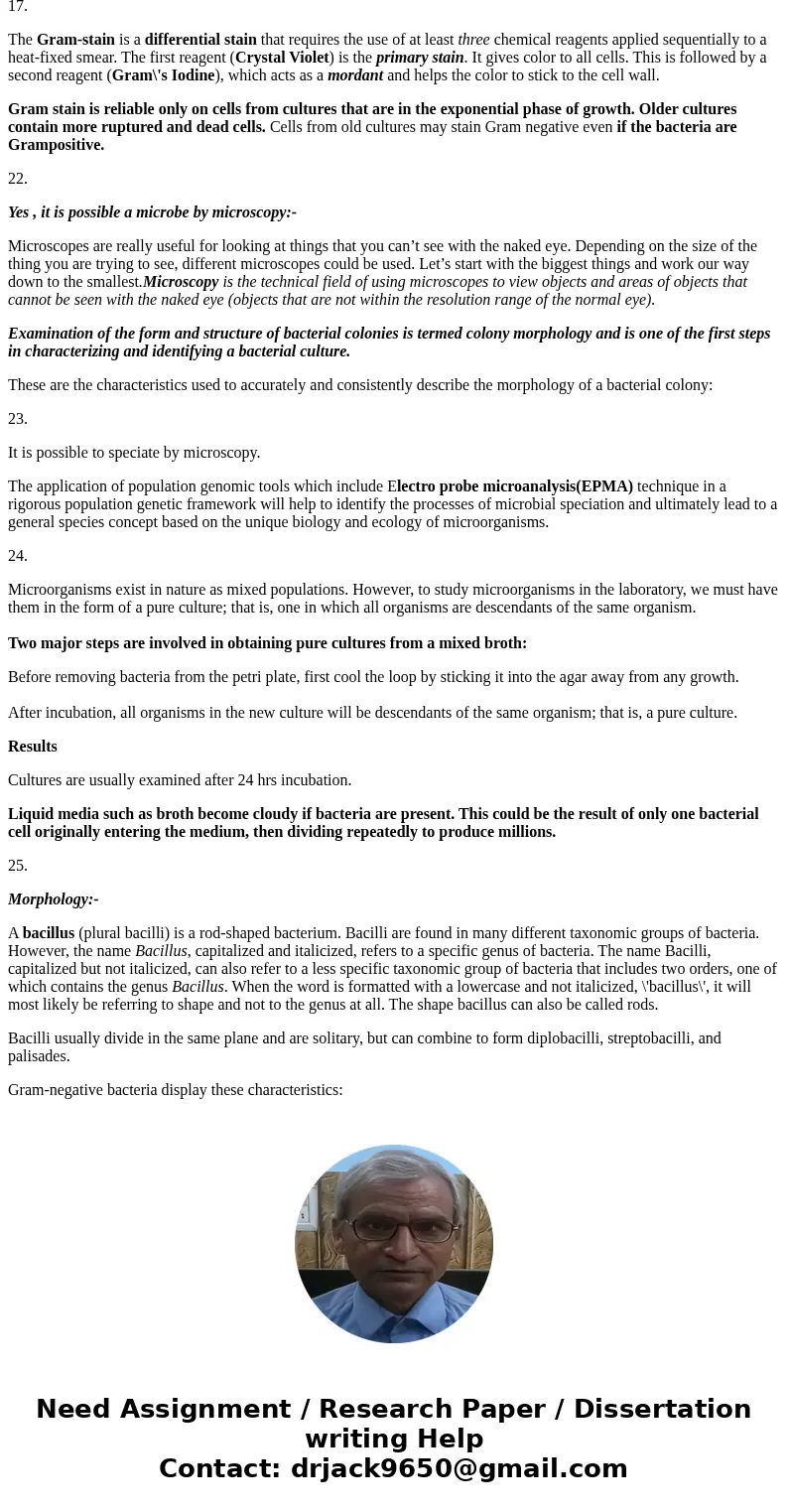t is the difference between an agar slant and a semisolid ag
Solution
17.
The Gram-stain is a differential stain that requires the use of at least three chemical reagents applied sequentially to a heat-fixed smear. The first reagent (Crystal Violet) is the primary stain. It gives color to all cells. This is followed by a second reagent (Gram\'s Iodine), which acts as a mordant and helps the color to stick to the cell wall.
Gram stain is reliable only on cells from cultures that are in the exponential phase of growth. Older cultures contain more ruptured and dead cells. Cells from old cultures may stain Gram negative even if the bacteria are Grampositive.
22.
Yes , it is possible a microbe by microscopy:-
Microscopes are really useful for looking at things that you can’t see with the naked eye. Depending on the size of the thing you are trying to see, different microscopes could be used. Let’s start with the biggest things and work our way down to the smallest.Microscopy is the technical field of using microscopes to view objects and areas of objects that cannot be seen with the naked eye (objects that are not within the resolution range of the normal eye).
Examination of the form and structure of bacterial colonies is termed colony morphology and is one of the first steps in characterizing and identifying a bacterial culture.
These are the characteristics used to accurately and consistently describe the morphology of a bacterial colony:
23.
It is possible to speciate by microscopy.
The application of population genomic tools which include Electro probe microanalysis(EPMA) technique in a rigorous population genetic framework will help to identify the processes of microbial speciation and ultimately lead to a general species concept based on the unique biology and ecology of microorganisms.
24.
Microorganisms exist in nature as mixed populations. However, to study microorganisms in the laboratory, we must have them in the form of a pure culture; that is, one in which all organisms are descendants of the same organism.
Two major steps are involved in obtaining pure cultures from a mixed broth:
Before removing bacteria from the petri plate, first cool the loop by sticking it into the agar away from any growth.
After incubation, all organisms in the new culture will be descendants of the same organism; that is, a pure culture.
Results
Cultures are usually examined after 24 hrs incubation.
Liquid media such as broth become cloudy if bacteria are present. This could be the result of only one bacterial cell originally entering the medium, then dividing repeatedly to produce millions.
25.
Morphology:-
A bacillus (plural bacilli) is a rod-shaped bacterium. Bacilli are found in many different taxonomic groups of bacteria. However, the name Bacillus, capitalized and italicized, refers to a specific genus of bacteria. The name Bacilli, capitalized but not italicized, can also refer to a less specific taxonomic group of bacteria that includes two orders, one of which contains the genus Bacillus. When the word is formatted with a lowercase and not italicized, \'bacillus\', it will most likely be referring to shape and not to the genus at all. The shape bacillus can also be called rods.
Bacilli usually divide in the same plane and are solitary, but can combine to form diplobacilli, streptobacilli, and palisades.
Gram-negative bacteria display these characteristics:


 Homework Sourse
Homework Sourse